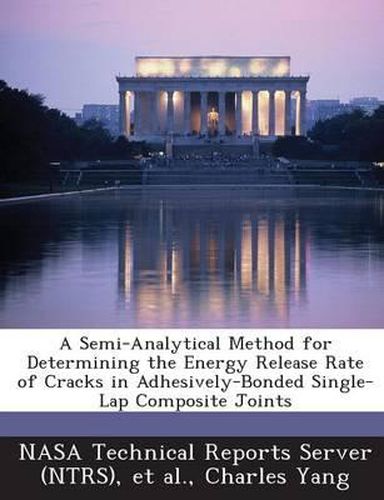Readings Newsletter
Become a Readings Member to make your shopping experience even easier.
Sign in or sign up for free!
You’re not far away from qualifying for FREE standard shipping within Australia
You’ve qualified for FREE standard shipping within Australia
The cart is loading…






A semi-analytical method for determining the strain energy release rate due to a prescribed interface crack in an adhesively-bonded, single-lap composite joint subjected to axial tension is presented. The field equations in terms of displacements within the joint are formulated by using first-order shear deformable, laminated plate theory together with kinematic relations and force equilibrium conditions. The stress distributions for the adherends and adhesive are determined after the appropriate boundary and loading conditions are applied and the equations for the field displacements are solved. Based on the adhesive stress distributions, the forces at the crack tip are obtained and the strain energy release rate of the crack is determined by using the virtual crack closure technique (VCCT). Additionally, the test specimen geometry from both the ASTM D3165 and D1002 test standards are utilized during the derivation of the field equations in order to correlate analytical models with future test results. The system of second-order differential field equations is solved to provide the adherend and adhesive stress response using the symbolic computation tool, Maple 9. Finite element analyses using J-integral as well as VCCT were performed to verify the developed analytical model. The finite element analyses were conducted using the commercial finite element analysis software ABAQUS. The results determined using the analytical method correlated well with the results from the finite element analyses.
$9.00 standard shipping within Australia
FREE standard shipping within Australia for orders over $100.00
Express & International shipping calculated at checkout
Stock availability can be subject to change without notice. We recommend calling the shop or contacting our online team to check availability of low stock items. Please see our Shopping Online page for more details.
A semi-analytical method for determining the strain energy release rate due to a prescribed interface crack in an adhesively-bonded, single-lap composite joint subjected to axial tension is presented. The field equations in terms of displacements within the joint are formulated by using first-order shear deformable, laminated plate theory together with kinematic relations and force equilibrium conditions. The stress distributions for the adherends and adhesive are determined after the appropriate boundary and loading conditions are applied and the equations for the field displacements are solved. Based on the adhesive stress distributions, the forces at the crack tip are obtained and the strain energy release rate of the crack is determined by using the virtual crack closure technique (VCCT). Additionally, the test specimen geometry from both the ASTM D3165 and D1002 test standards are utilized during the derivation of the field equations in order to correlate analytical models with future test results. The system of second-order differential field equations is solved to provide the adherend and adhesive stress response using the symbolic computation tool, Maple 9. Finite element analyses using J-integral as well as VCCT were performed to verify the developed analytical model. The finite element analyses were conducted using the commercial finite element analysis software ABAQUS. The results determined using the analytical method correlated well with the results from the finite element analyses.